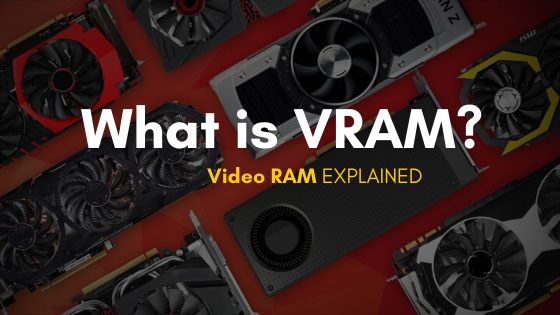How to increase dedicated Video RAM Intel HD Graphics Modern computing requires high power from devices. Regardless of whether you’re working on a YouTube edit or watching a movie on your smartphone, your video memory needs to be high. Your does dedicated video ram matter(VRAM) gives you the ability to stream, view, and work on video.
In this post, we discuss what VRAM is and How to increase dedicated video memory without BIOS. To finish off, we show you how to increase your VRAM and the times where you won’t be able to do this.
How to check Dedicated Video RAM Windows 10. The graphics card is the most determining piece of hardware of your system when it comes to impacting your overall PC performance. If your graphics card (dedicated or integrated) is old with mediocre specs, you’ll most likely be prohibited from accessing new and hot applications and games.
If you don’t have the money for a brand new GPU, you might be able to fool your system by faking a VRAM increase. Moreover, How to increase dedicated Video RAM Intel HD Graphics. If you are using High-End Processors like the Core i9-9900k for example, you need to make sure, it’s not bottlenecked by the low ram. These processors come up with incredible motherboards, and taking the best out of them is necessary.
What is VRAM?
The visual RAM is responsible for the majority of the faults caused by a bad graphics card (VRAM). Dedicated video memory 0mb is a sort of RAM that is responsible for storing information required by the GPU. It improves performance by allowing the GPU to quickly fetch data and send it to your monitor.
Because VRAM was designed expressly for this high-intensity function and is physically closer to the GPU, it performs GPU-related activities much faster. You’re undoubtedly aware that integrated graphics cards are less expensive than dedicated graphics cards, but they can’t match the graphical output of dedicated solutions. Keep in mind, though, that having more VRAM will not definitely improve your computer’s performance.
Insufficient Dedicated video memory 128MB forces your system to use regular RAM, resulting in performance decreases, reduced frame rates, texture pop-ins, and other issues. There are a few options available if you are unable to run certain games or applications due to a lack of VRAM.
How to Increase the Dedicated VRAM of your GPU
How important is video RAM for gaming Buying a new graphics card is, of course, the greatest way to increase your video RAM. If your dedicated GPU is old or you’re still using your integrated graphics card, switching to a new GPU model will give you a significant performance gain (if you have CPU and RAM good enough to sustain the growth).
If you don’t want to spend the money on an update, there are two more options for increasing your GPU’s dedicated VRAM (at least on paper). Feel free to use whichever strategy appears to be the most practical in your situation.
How to Increase Your VRAM
To begin with, whether you can increase your VRAM depends on the machine you choose. If you’re using a Mac, your options are limited, and you can’t do this for all intents and purposes. On Windows, things are a little different. Dedicated video memory 128MBYou may verify how much VRAM you have on any machine regardless. For Windows, follow these steps:
1. Open “Settings -> System -> Display.”
2. Scroll to the “Advanced display settings.”
3. Click the “Display adapter properties” link.
4. On the dialog screen, click the Adapter tab. Here, look for the “Dedicated Video Memory” option. This is your total available VRAM.
On the Mac, you’ll head to the “System Information” panel and look for your VRAM figures under the “Hardware -> Graphics/Displays” setting. As for increasing your VRAM, as we noted, you can only do this on Windows as an end-user. If you’re on Windows, there are two approaches:
- Change the VRAM in your BIOS settings.
- Fake a VRAM increase using Registry keys.
For the latter, Windows changes the amount of allocated Dedicated video memory 128MB in a dynamic way. The figure you noted earlier is more of the upper limit of what your system can achieve. What’s more, Windows and Mac are more alike than you realize. In fact, neither OS can update VRAM from the desktop, although you’re able to allocate a portion of RAM to your VRAM. You do this through the Registry Editor.
Here are the steps:
1. Type regedit into the Start Menu or search bar.
2. Head to “HKEY_LOCAL_MACHINE\Software\Intel” within the Registry Editor.
3. Right-click and create a new key called “GMM” (without the quotes), then select the folder from the menu on the left.
4. Right-click on the right panel again, and this time, choose “New -> DWORD (32-bit) Value.”
5. Name it “DedicatedSegmentSize” and give it a Decimal value up to a maximum of 512.

At this point, restart your computer and see if the issue is any better. There’s no guarantee that this will solve the problems you’re having, but it could give your video playback an extra edge over the previous configuration.
How to Increase Dedicated VRAM?
There are 2 methods to increase dedicated VRAM for your laptop or PC.
Method 1: Increase VRAM through BIOS
Step 1 – You need to access the BIOS of your laptop or PC. Note that all manufacturers do not assign the same BIOS keys to their products. Check the BIOS hotkey for your laptop or PC here.
Step 2 – Look for the ‘Advanced’ or ‘Advanced Options’ or ‘Advanced Features’ option. Click.
Step 3 – Find the option labeled as ‘VGA Memory Size’ or ‘Video Settings’ or ‘Graphics Settings.’ Click.
Step 4 – Click the ‘Pre-Allocated VRAM’ option. Change the value.
Note that all PCs and laptops come with a default dedicated video memory of 64 MB, or more commonly, 128 MB. You can scale this value up to 256 MB or even 512 MB.
However, there are some pitfalls to this method. Certain PC architectures do not allow users to increase or change the pre-allocated default VRAM memory. Some motherboards do not come manufactured with the access or privilege to change them.
Method 2: Increase VRAM through Registry Editor
The motherboard adjusts the VRAM in use based on the needs of the computer. As a result, you can think of the allocated memory as the higher average of your PC’s total VRAM usage. It’s also a provisional pre-specified adapter property that can be changed or adjusted at the software level. You can simply construct a virtual Dedicated video memory of 128MB if you require more VRAM.
Here, you are essentially reallocating a certain portion of your RAM as VRAM. You can create a VRAM entity that your system will automatically consider as an available entity and utilize the same for graphics performance.
Here is how to increase dedicated VRAM via Registry Editor in Windows 10
Note that you can only apply this on an integrated processor GPU chipset and not an additional GPU or video card.
Step 1 – Go to the Start Search on your Windows 10 and type ‘Run’ to open the Run box. Type ‘Regedit’ and press Ok.
Step 2 – Go To HKEY_LOCAL_MACHINE > Software > Intel. Right-click on the ‘Intel’ Directory and create a new ‘Key’, and name it as “GMM”
Step 3 – Select the ‘GMM’ folder. Right on the right side of the open window and navigate to ‘New.’ Navigate to the DWORD option and name it as ‘DedicatedSegmentSize,’ without spaces.
Step 4 – Find the DedicatedSegmentSize folder created on the left and double-click it to open the edit box. Under ‘Base,’ choose ‘Decimal.’ Under ‘Value data,’ allocate a VRAM size till up to 512 MB. It is advised to create only up to 256 MB.

In Summary
The current web revolves around video. As a result, there’s always a good incentive to beef up your video-playing capabilities. Increasing your VRAM, which influences how much memory you have to work with, is a fantastic place to start. On a Windows machine, you can do this through the Dedicated video memory 128MB or the registry. The solution you select will be determined by your requirements and prior expertise working under the hood of your machine.
We offer a guide to help you understand the differences between RAM and VRAM. Is it necessary to upgrade your VRAM? Has this article been of assistance to you? Please share your thoughts in the comments box below!
READ ALSO: How To Add Games To Discord Library In 2022










